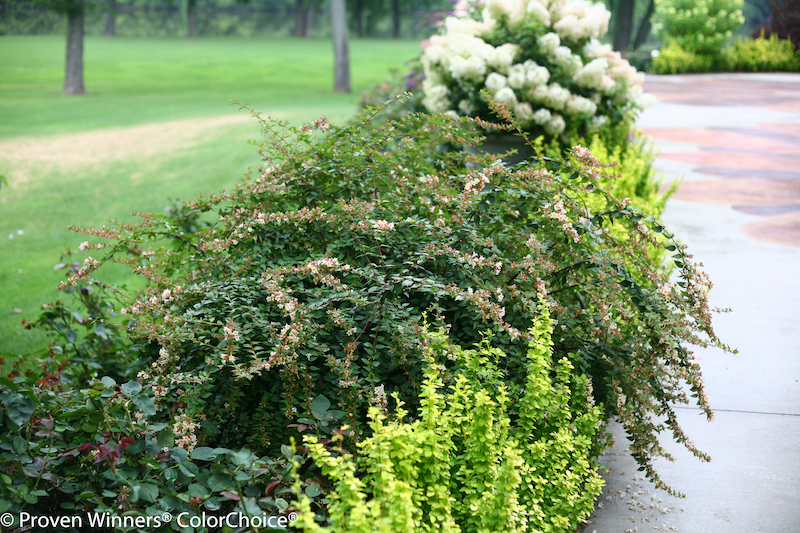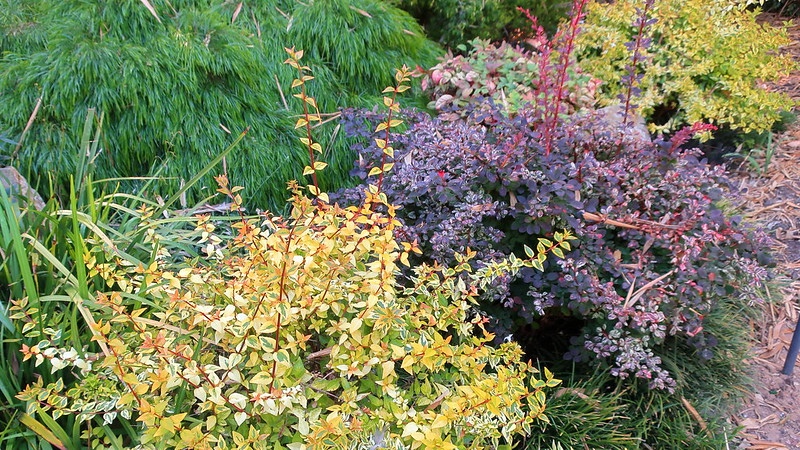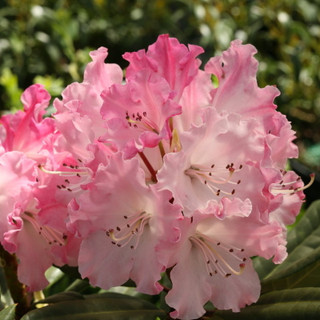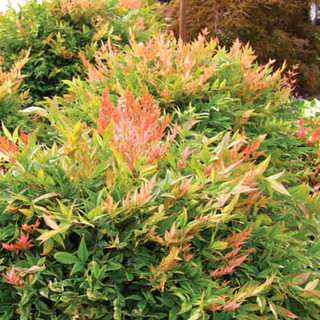One of the most underutilized shrubs in the home garden is Abelia. This hardy shrub will grow in USDA zones 4-11 with little maintenance required. The glossy, but small leaves change colors throughout the growing season and perfectly highlight the delicate flowers that both beneficial pollinators and hummingbirds adore. Planting one or two varieties provides summer-long flowers and beautiful fall foliage color.

This shrub is quick to mature to its full size after 2-3 years but is well-behaved and produces few suckering branches to manage. Abelia is not fussy about the pH or texture of the soil it grows in. Heavy clay and lightweight sandy loam are both acceptable as long as they drain well. Abelia growing in too wet a location or too much shade is susceptible to root rot and mildew diseases.
Abelia has a gently spreading fountain shape that works well in cottage gardens and naturalistic garden designs. Plant Abelia as part of an informal hedge for encouraging wildlife to your garden. The dense foliage and branches make the perfect nesting and hiding spots for birds. It will pair well with perennials and other shrubs that grow in full sun or partial shade.
Shrubs To Plant With Abelia
Most Abelia varieties begin blooming in late spring and early summer. Plant it in the understory of taller broadleaf evergreen shrubs to highlight the delicate foliage and flowers. Because Abelia will tolerate a range of soil pH levels, it can be grown alongside rhododendrons, azaleas, nandina, camellia, or any other acid-loving shrubs. Lilacs, viburnum, flowering quince, and spirea are some great early blooming deciduous shrubs that will mix and mingle with Abelia beautifully. Choose flower colors and foliage to complement the bronze and green foliage of Abelia. Hydrangea, brightly colored barberry, and roses also provide contrasting foliage to add another layer of texture to the garden border.

Photo by K M, unmodified, Flickr, copyright CC BY 2.0
Perennials To Plant With Abelia
There is no lack of perennials that will grow with Abelia. Choose flower colors that will contrast or complement the green and burgundy foliage as well as the flowers. Small flowering perennials like coreopsis, columbine, bleeding hearts, and astrantia help to soften the look of a garden border. On the other hand, the large flowers of daylily, shasta daisy, and agapanthus help to ground Abelia when grown as a mid-height layer.
Ornamental grass and grasslike plants also are a good choice to grow with Abelia. Mondo grass and liriope can be planted at the front of a garden border, while taller ornamental grass can be added to the back to anchor the planting.
Annuals To Plant With Abelia
Annuals are usually planted in a bed as placeholders to bridge the 1-3 years it takes for either the shrubs or the herbaceous perennials to reach their mature size. In more naturalistic designs, annuals are allowed to self-seed in a controlled manner to provide quick, early growth or to provide seed and shelter to wildlife through the winter. A few of the best annuals to pair with Abelia shrubs include cosmos, zinnia, cleome, hardy annual baby’s breath, and snapdragons. These tall annuals are prone to self-seeding in mild climates, enhancing the feeling of a slightly wild garden.
For a touch of the exotic, grow abelia with tender perennials such as spider lily (crinum), shrimp plant (justicia brandegeeana), and ice plant. These plants are not fully hardy in cold climates; however their bold colors and textures make them worth growing.

Photo by K M, unmodified, Flickr, copyright CC BY 2.0
Best Companion Plants For Abelia in Containers
Abelia is a wide, spreading shrub that really does not grow well with other plants in a container. In fact, only the smallest types of Abelia should be grown in a pot. Try displaying a container-grown Abelia as a single specimen or as part of a container garden on a sun-dappled deck or patio. Use a heavy-bottomed container that can sustain the heavy top growth of the shrub. Water the pot consistently during extremely hot or dry weather to keep Abelia healthy.
Every 1-2 years, the shrub will need to be repotted or replenished with fresh potting mix. To do this, simply scrape out the top 2-3 inches of potting mix from the pot, being careful to not disturb or damage any roots. Add a fresh layer of potting mix and top dress with a balanced slow-release fertilizer.
Plants Not To Grow With Abelia
Abelias do not grow well in dry shade or very wet locations. If planted under tall trees, Abelia will require regular supplemental watering and/or mulching to help it establish well. Conversely, pond or bog plants will not grow well in the full sun and well-draining soil that Abelia prefers.
Best Plants To Grow With Abelia
In a landscape setting, try planting shrubs and perennials of different heights to highlight Abelia’s naturally spreading canopy and profusion of small delicate flowers. For example, the front of the planting could include low-growing calibrachoa and fiber optic ornamental grass, while daylilies, shasta daisies, and speedwell can add an interesting vertical element to the middle layer. For the backdrop, consider colorful shrubs like nandina, barberry, and azaleas.
 Author Robbin Small - Published 09-15-2023 Author Robbin Small - Published 09-15-2023 |




